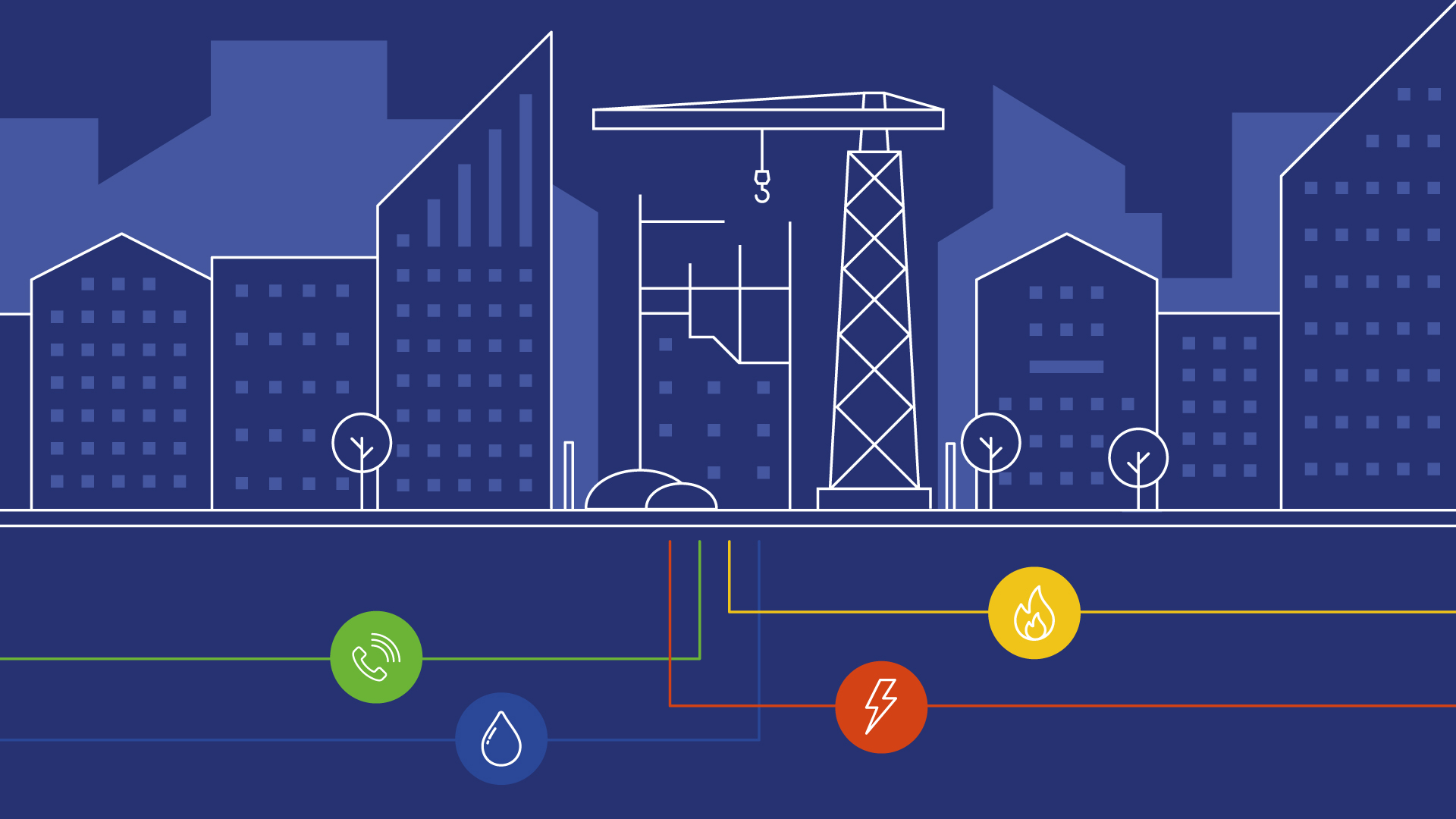If you are involved in commissioning, planning, managing or carrying out work on or near underground services, it is vital that you know what is located in the vicinity. Before embarking on your next project, take a look at these five compelling reasons why you should first obtain Utility Mapping Plans:
1. You must ensure that you meet Health and Safety regulations (HSG47) whenever you ‘break ground’. This is essential regardless of the equipment used to break ground or the depth. Health and Safety regulation requirements for breaking ground apply to any type of area from highways and industrial areas through to green field and rural. Our Site Investigation Reports (PAS 128 Quality Level C, on-site reconnaissance) and our Premier Reports (PAS 128 Quality Level D) are HSG47 compliant.
2. A Utility Record Search should be part of land acquisition due diligence. Before any land purchase it is essential to understand what buried services may lurk beneath the ground. Acquisition due diligence is crucial for safety and for project efficiency. If a water or drainage main is struck, for example, not only will this result in a loss of water and sewage, it could also contaminate the land. Strikes carry huge costs. In addition, a lack of understanding of existing utilities could result in more diversions and disconnections than expected, the costs of which could be measured in the thousands.
3. Utility Mapping Plans can mitigate commercial risk. For example, by seeing the implications of having a High Pressure Gas Mains running through your site of interest, you would have the opportunity to take action to reconsider or redesign your development. This could impact land value and overall project viability.
4. Utility plans form an essential part of the design and planning process. Understanding where the existing network lies, what points of connection are best for your site and where additional sub-stations may need to be located is essential. For example, a client started works on a site in London without plans and had driven piles below ground very close to Thames Water Ring Main, one of Thames Water’s most important assets. We helped by notifying Thames Water, producing relevant drawings, preparing cross-sections and showing the Southern boundary section. Had the works been located within exclusion zone, there would have been legal action, fines and a risk of demolition.
5. Accidentally striking underground cables and pipes is a serious safety problem for engineers in the utilities and construction sectors. A cable strike can cause serious injury or death and cost a business millions of pounds. If an electric cable is hit there is potential for loss of life. A utility search is a cost effective and obvious starting point for any type of works, development or demolition project.
Premier Energy Specialist in utility infrastructure solutions, with 25 years in business, we have the expertise to look after your needs. Whether you are in the civil, public sector, commercial or residential industry, our Utility Mapping Plans and Reports can save you time and money by helping you to avoid costly errors. Our reports are PAS 128 QL-D and HSG47 compliant and we highlight the site boundary on the utility plans to quickly and clearly show what is affecting the site. Easy to order online, our PALM 128 transposes all utility asset information onto an OS MasterMap.
If you want to learn more about our high quality utility searches and consultancy services, contact us today.

